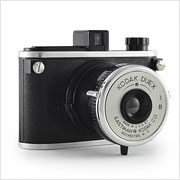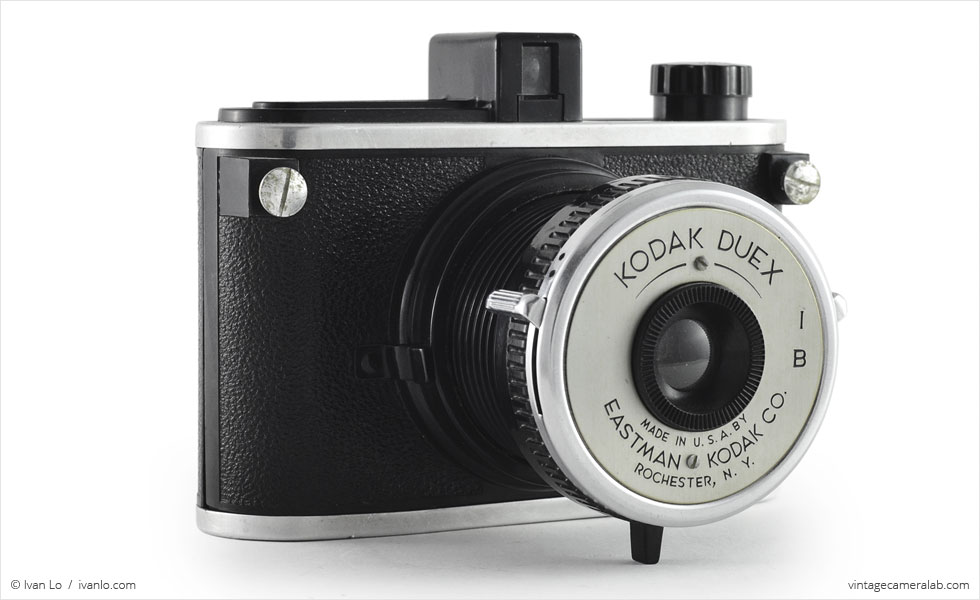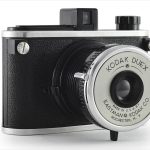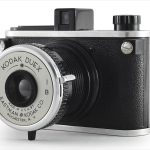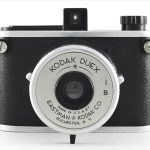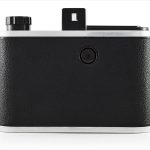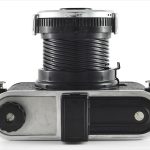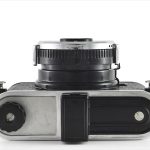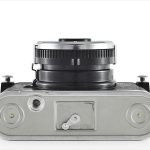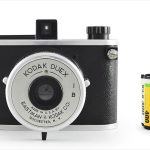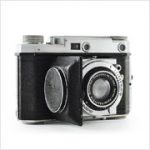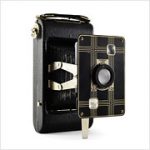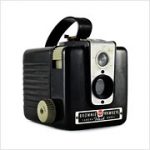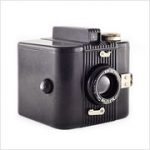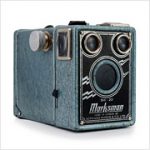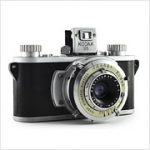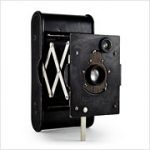Kodak Duex Specifications
| Manufacturer: | Eastman Kodak Company |
| Origin: | USA |
| Made in: | Rochester, NY, USA |
| Introduced: | 1940 |
| Type: | Viewfinder |
| Format: | 620 Film |
| Dimensions: | 12.3 x 9.2 x 7.1 cm |
| 12.3 x 9.2 x 9.3 cm (lens open) |
Kodak Duex Overview
The Kodak Duex is a collapsible basic medium format viewfinder camera introduced by Eastman Kodak in 1940 for 620 roll film. The Duex is the spiritual successor to the Kodak Duo series of 620 cameras which were designed by Dr. August Nagel (founder of Nagel, Contessa, and thus co-founder of Zeiss Ikon) and produced in the Nagel factory in Stuttgart shortly after the company was sold to Eastman Kodak. The Duo was made in Germany until Kodak shifted production to the United States due to the looming threat of conflict. Then, with the Second World War cutting off access to its German division, Kodak transitioned their 620 offerings from high quality folding cameras to inexpensive and relatively primitive models like the Duex.
The Duex’s main feature is its helicoid lens barrel which can be extended via clockwise rotation. Once expanded, the rotary shutter behind the simple meniscus lens with a fixed aperture of approximately f/11 can be tripped via the lever at ten o’clock with two speeds (Instant, about 1/30 of a second, and Bulb) which are set by the tab at two o’clock. A simple optical viewfinder can be found in the middle of the top plate with a film winding knob (which appears to be taken straight from the Kodak 35 production line) off to the side. The bottom plate features a tripod socket and the latch that allows the back of the camera to slide apart for loading and unloading 620 film. A red window is available on the back of the camera for users to check their frame count.
I’d be lying if I said that the Kodak Duex has ever been anywhere near the top of my wish list so I wasn’t exactly looking for one when I picked one up on eBay in the same lot as a Univex Uniflash and an Argus Automatic 35. That said, the classic lines of the Duex have really grown on me. I especially like the art deco style typeface used on the lens and the symmetry of the shutter and shutter speed levers.
Find your very own Kodak Duex on eBay.
McKeown, James M. and Joan C. McKeown’s Price Guide to Antique and Classic Cameras, 2001-2002. (Grantsburg, WI, USA: Centennial Photo Service, 2001), p 337-338, 374, 487-488.
“August Nagel,” Wikipedia, https://en.wikipedia.org/wiki/August_Nagel
“Kodak Duex,” Camerapedia, https://camerapedia.fandom.com/wiki/Kodak_Duex
